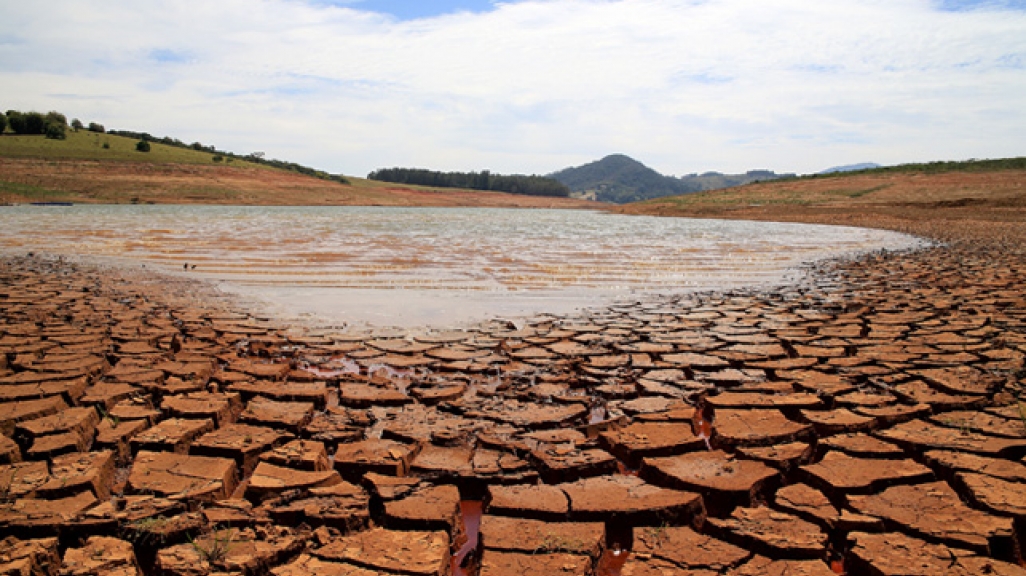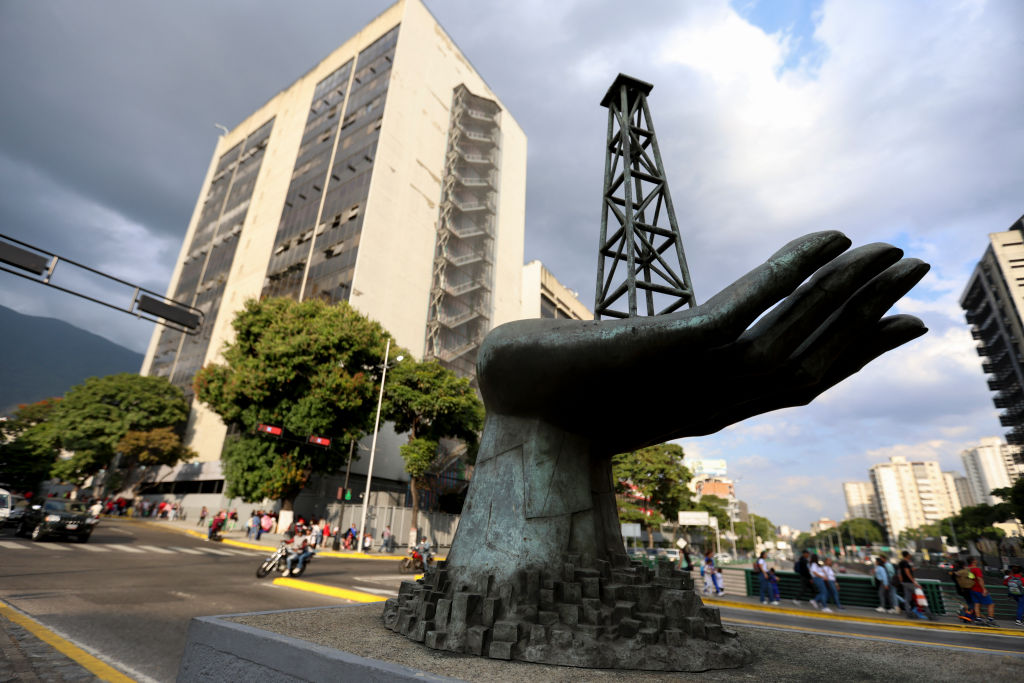Brazil Update: Five Points to Know about the Historic Drought
Brazil Update: Five Points to Know about the Historic Drought
The worst in eight decades, the southeast region's water crisis resulted in shortages in the country's most populous city and affected 40 million Brazilians.
Updated February 25, 2015 - Brazil’s southeast region is suffering from the worst drought in eight decades, causing water shortages in the country’s most populous state. In a meeting with President Dilma Rousseff on November 10, São Paulo Governor Geraldo Alckmin requested $1.36 billion to address dwindling water resources. The drought hit São Paulo the hardest, and the October general election saw officials spar over who should take responsibility for the state’s water shortages. Plus, some of the country’s top agricultural crops have taken a hit. AS/COA Online looks at five important points to know about the drought.
1. The drought is affecting Brazil's most populous states.
The country's National Water Agency estimates that the drought has affected nine states and the Federal District, or a total of 40 million Brazilians—about 20 percent of the country's population. Nationwide, rainfall is down 20 percent, while parts of Minas Gerais and São Paulo states have seen 60 percent less rain than on average.
In particular, Brazil's southeastern states have dealt with unusually low rainfall for most of 2014. During the abnormally dry rainy season from December to February, one-third of expected rainfall fell in the region. The three states most affected by the drought—São Paulo, Rio de Janeiro, and Minas Gerais—are the country's most populated, and the urban demand for water has presented management challenges to authorities. Excluding the state capital, nearly 14 million people in 70 municipalities in São Paulo state are affected by the drought. Meanwhile, a quarter of districts in the city of São Paulo are experiencing water shortages. From February to October, the state—responsible for a third of Brazil’s gross domestic product—received only 40 percent of its normal rainfall, with levels down 12 to 16 inches.
In Minas Gerais, the source of the San Francisco River dried up for the first time, threatening water scarcity for the state's residents. The drought has also forced municipalities in Rio de Janeiro and Espirito Santo to declare states of emergency.
In September, Folha de São Paulo reported that 1,183 municipalities across Brazil had declared a state of emergency—equal to one-fifth of the country's population. By October 20, the number had grown to 1,829.
2. Officials have resisted rationing, but are seeking a variety of solutions in the face of dwindling supplies.
Reserves at the Cantareira reservoir system, which supplies water to 8.45 million people in the São Paulo metropolitan area, have fallen to record lows. In May, Sabesp—the state-owned water utility that serves a majority of the São Paulo market—carried out a $31 million infrastructure project to tap 400 million cubic meters of water located below the reservoir’s floodgates, boosting capacity to 26.7 percent. But in October, Cantareira's water level dropped to around 3 percent: the lowest level in history. As a result, Sabesp successfully petitioned the city to tap additional unused reserves, which boosted capacity to 13 percent. On November 7, a water management consortium sent Sabesp a $2.37 billion proposal to desalinate ocean water for consumption, a drastic measure for the country with more freshwater than any other. Overall, infrastructure projects for reservoirs in São Paulo and Rio de Janeiro are set to cost more than $3.3 billion.
In early November, Folha de São Paulo reported that at least 61 cities in the Southeast implemented some form of rationing and 19 imposed fines on overuse. For most of the year, São Paulo's governor Geraldo Alckmin avoided the unpopular route of water rationing, and denied that the state was doing so, although many São Paulo residents have reported interruptions in their water supply. Meanwhile, Sabesp told Bloomberg that there is currently no rationing in any of the 364 cities it supplies, and that it was pursuing a plan to reduce water usage through discounts for customers who use less. However, residents of southeastern São Paulo municipalities have reported water cuts, with 38 cities outside the capital officially instituting water rationing.
In January, Alckmin admitted for the first time that rationing was indeed in effect. Insufficient rainfall that month pushed state officials to announce that paulistas could go without water for five days a week should February and March rainfall also disappoint. Meanwhile, the Guardian reported that water use in the city of São Paulo in January 2015 was down 25 percent from the same month a year prior.
Meanwhile, in Minas Gerais, the water utility company that supplies Belo Horizonte assured residents in October that the city was not at risk of rationing, while several cities approved measures to restrict water use. In Rio de Janeiro state, reservoirs in the Paraiba do Sul river basin hit record-low levels in October, prompting authorities to propose a rationing plan for Rio's metropolitan region. In January, Adacto Ottoni, an environmental engineer from the State University of Rio de Janeiro, warned that the state could see rationing as soon as August 2015 and even during the Olympic Games in 2016.
Some experts say earlier actions by the authorities—such as rationing—may have lessened the crisis in São Paulo, where drought is not unprecedented. Catarina de Albuquerque, a UN special rapporteur on water and sanitation, told Folha that the gravity of São Paulo's water shortage could have been avoided with government intervention. Marussia Whately, a water resources consultant and founder of the Alliance for Water, told El País that water management planning, increasing urbanization, and deforestation all played roles in the crisis.
3. A climate scientist linked the drought to deforestation of the Amazon.
On October 30, leading climate researcher Antônio Nobre of the Center for Earth System Science released a report that asserts that deforestation of the Amazon has disrupted the “vegetation-climate equilibrium. Such a balance involves the regulation of climate when forests move moisture through the ecosystem via transpiration and evaporation. According to the report, deforestation impeded the flow of moisture from the north to the south of Brazil, resulting in drought.
Brazilian forests encompassing an area equivalent to two times the size of Germany have been cut down in the past 40 years, the report says. Deforestation rates peaked in 2004 but dropped sharply after, with the downward trend continuing until 2013. A September 2014 report from Brazil's National Institute for Space Research found that during the year ending in July 2013, deforestation jumped 29 percent. In that year, the Brazilian Amazon lost 3,360 square miles of forest, an area half the size of Puerto Rico. The Brazilian environmental agency Ibama reported in November that deforestation rose 122 percent in August and September, compared to the same period in 2013.
4. The drought could impact Brazil's commodity output.
Brazilian agricultural production has taken a hit because of the drought. Brazil produces more than a third of the world’s coffee, and Minas Gerais, Brazil’s top coffee-producing state, saw outputs of Arabica beans, soy, and corn fall 13, 25, and 26 percent, respectively. Brazil's National Coffee Council projected that coffee production this season will ultimately be down 18 percent. The reduced supply thus far in 2014—Brazil's lowest in three years—pushed up prices, which nearly doubled and hit a 32-month high in October. Prices have since fallen, though smaller outputs may mean that coffee markets won't feel the full blunt of the drought until 2016, given that many retailers have already provided for most of their 2015 stock.
The drought is contributing to what could become the sugar industry's first deficit in five years. Jonathan Drake, COO of trading company RCMA Group, said Brazil's sugar cane harvest could fall by around 10 percent over the 12 months beginning April 1. Around 90 percent of the country's output comes from the south-central region most affected by the drought. Plus, Brazil's sugar exports from May 2014 and to April 2015 are projected to hit a six-year low, according to data from the U.S. Department of Agriculture’s Brazil bureau.
The drought is also impacting soy, Brazil's third biggest export. Some farmers are delaying planting, while others are forced to replant. Oil World estimated output to be down 3 million tons less than originally expected, though the National Supply Company estimated Brazil could beat its record soybean crop, producing between 89.3 million tons and 91.7 million tons. Meanwhile, the delayed sowing season pushed prices to a six-week high the last week of October. Plus, São Paulo soy producers spent an extra $12 million to transport their product by truck after the Tiete-Paraná waterway became inoperable in May.
5. Brazil is rethinking its reliance on hydropower as the water crisis could affect energy production.
The lack of rainfall in the Southeast has put pressure on Brazil's hydroelectric plants, with the potential for the water crisis to become an energy crisis. Although Brazil's deputy energy minister said in November that power rationing is off the table, the CEO of Brazil's largest private energy generator believes such measures are likely without more rain. The country generates three-quarters of its energy through hydropower; only China sources more of its energy this way. About 70 percent of Brazil's hydropower plants are in the drought-plagued states of São Paulo, Minas Gerais, Rio de Janeiro, and Espirito Santo. Companies buying energy saw prices triple in October over the previous year, and capacity at hydroelectric plants in the Southeast and Midwest fell 36 percent since June.
Amid the strain on the hydropower sector, the government is pushing to diversify its energy sources through solar energy. On October 31, Brazil's energy regulatory agency auctioned off contracts for the construction of 31 large-scale solar projects. The first of their kind in Brazil, the projects will add 1,048 megawatts to Brazil's energy grid. With 280 sunny days a year, Brazil is a prime market for solar energy infrastructure. The country sources less than 1 percent of its energy through solar generation, but the government hopes to increase that number to 1.8 percent by 2023. Electric Light and Power reported that as a result of the drought, the annual output from the Itaipu hydroelectric plant, the largest of its kind in Brazil, fell 11 percent in 2014.









